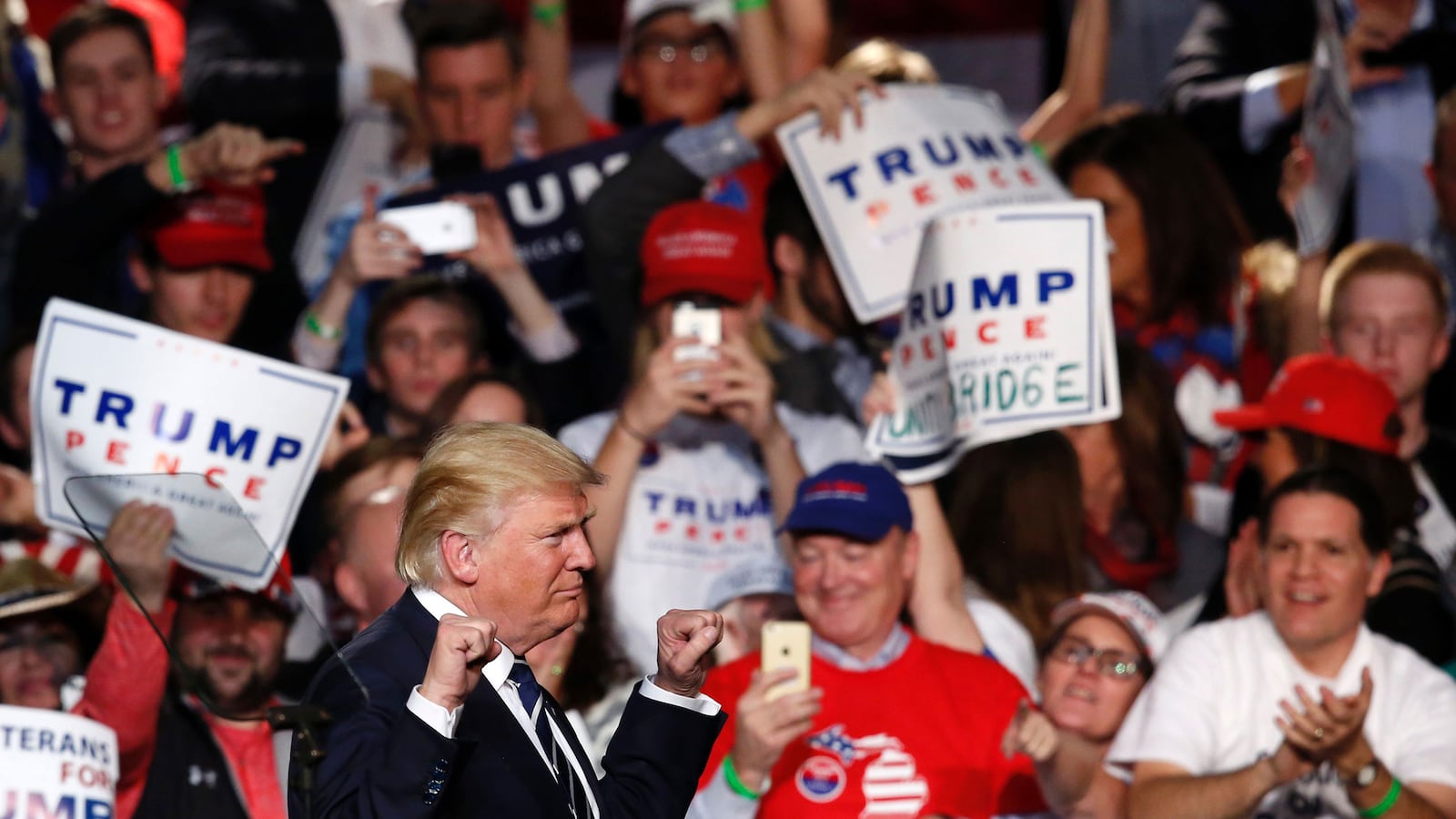The world was certainly turned on its head in 2016. That’s the top-line cliché in every year-end review, and it’s true. But let’s go one tug of the rope farther and note that this was accomplished by fewer than 1.5 million voters.
If we agree that it was mainly the Brexit vote and our presidential election that did this head-turning, then let’s remind ourselves of the numbers. Leave beat Remain in the U.K. by 1.27 million votes. Donald Trump beat Hill—well, that’s complicated, as we know; but he did win the Electoral College fair and square, and the most commonly agreed-upon number is that if 80,000 voters in three states had gone in the other direction, Clinton would have won.
That’s it. Just 1.35 million voters, out of more than 170 million in two countries, threw the world into chaos.
I’m not pointing this out to minimize the legitimacy of the results. They happened, and we’re going to have to accept them and live with the consequences. Those are going to be enormous and, I and many millions of people fear, horrific—for Europe and the U.K., for the people in the United States who didn’t vote for Trump, and probably also for most of the people who did, because even a president can’t do much about robotics and automation.
I’m also not trying to downplay the seismic nature of what happened by saying “Hey, it’s just a few votes.” This crisis to which both outcomes gave voice is the central political crisis of our time: how Western democracies manage globalization and immigration so that these kinds of reactionary rebellions can’t catch fire. Our establishments, in the United States and Britain and elsewhere, have to figure this out. It’s getting more and more ominous. Next up comes France, where the presidential election will take place in the late spring; and then comes Germany. It seems somehow not in the cosmic cards for there to be a worldwide right-wing authoritarian uprising and for it not to hit, of all places, Germany.
So I’m not downplaying anything. But I am pointing out the numbers to say to you not to give up hope. This is fixable.
How? It’s going to take a lot—many long-term changes in strategy and policy that shift investment in middle-class and working-class people in ways that ensure that they see and understand the benefits. One of the saddest ironies of our election was that Hillary Clinton was for those investments—a higher federal minimum wage, debt-free tuition, health coverage expansion, paid family leave—while Trump opposed them (except family leave, on which he introduced a shell-game proposal just to be able to say he proposed it). And yes, she talked about them a lot, although apparently not in quite the right way or in quite the right places.
Liberalism needs people who can talk about them the right way and in the right places. It also needs, desperately, to spread facts and smother anti-facts. The triumph of anti-facts—a presidential candidate who lied as naturally as he drew breath, the rise of fake news, the plain refusal of 30 or 40 percent of the population to believe true things—is a major crisis for democracy.
This loomed large in the Brexit vote and was arguably dispositive as Nigel Farage and Boris Johnson and others sold the Leave position by boasting about the windfall it would bring the NHS and other government services, which they quickly and casually walked back after the vote. And I’m sure you know in gorier detail than you’d prefer how, the movement against fact, in its many guises, mattered here.
We need a strategy for combatting this. Rich liberals trying to think of ways to spend their money could do a lot worse than to create an organization that simply promulgates known facts in ways that will educate at least some percentage of Americans. A poll came out before Christmas showing that more than a third of Americans think the number of uninsured increased in the last five years. Even one in five Clinton voters thought this.
The news media can no longer be relied upon to state these plain truths. So liberals need to think of ways to get more Americans to know more factual things. The point would not be to persuade conservatives; half of Trump voters said in the same poll that they still think Obama comes from Kenya, so they’re unpersuadable. But if 8 percent of the middle 30 percent of voters can be reached, that will be enough to swing elections and public opinion.
But here is American liberalism’s biggest short-term job, what should be its 2017 New Year’s Resolution, and some of you aren’t going to like it: See to it that multiculturalism includes white people. And not urban white people or Jewish white people or gay white people or white people who live in hipster neighborhoods and wear ironic eyewear. Suburban, gray-haired, church-going white people.
Mark Lilla got a lot of praise, and took a lot of heat, for that New York Times op-ed on how this election should toll the death knell of identity politics on the left. I don’t understand why that struck like such a thunderbolt. I was making such arguments 20 years ago, as were several others, notably Todd Gitlin.
Lilla was criticized on the left for seeming to take the concerns of marginalized groups lightly and to open the door for a liberal politics in which those concerns are relegated to the kids’ table. I can see why liberal readers reacted that way, especially considering the larger context that the White House had just been snapped up by the most openly racist and misogynistic candidate in modern history.
But Lilla’s money paragraph said something liberals need to think about. Clinton, he wrote, had tended to call out explicitly to “African American, Latino, LGBT and women voters at every stop, the noting that “if you are going to mention groups in America, you had better mention all of them. If you don’t, those left out will notice and feel excluded.”
I don’t know how true this was of Clinton herself, but it’s true of liberalism in recent years in a broad sense. In our political-media shorthand, adjectives like white and church-going and suburban connote conservative, but it just isn’t necessarily so. I know lots of these people. My dear mom was one, and virtually all her friends from church. Loads of old high-school classmates. Most are more middle class than working class, though some are the latter. They may not check every single box. They may squirm a little when the trans-bathroom issue comes up. They think political correctness can be kind of ridiculous.
But they’re solid, wonderful people, and they live in small towns in purple states. Millions are in fact liberals, to some degree or another, and many millions more may not be liberals but sure aren’t conservatives. For many, their political views are not distinct from their Christian beliefs but indeed are a direct expression and fulfillment of them.
They are, in fact or in potential, part of our team, and we need to treat them that way. The Democratic Party needs to identify leaders who can connect with these folks. But more generally, liberals in New York and Washington and San Francisco and so on need to go talk to them, too, and see them as just as important a part of the gorgeous mosaic as the kinds of people we more commonly associate with the word multicultural.
The road back is long, but it goes in part through these folks’ hearts and minds. To write them off after such a small percentage of them voted the other way once would only compound the mistake.





